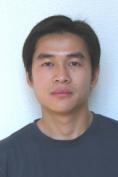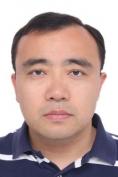Quantum communication can overcome the intrinsic security drawbacks of classical encryption technology, as the unique approach that is theoretically proven to be unconditionally secure so far. The most important components in quantum communication system include single-photon detector, quantum random number generator, and single-photon frequency conversion, whose parameters directly limit the performance of quantum communication system.
1. Single-photon detectors
Single-photon avalanche diodes (SPAD) operating in Geiger mode have distinct advantages such as low-cost, small-size and without requiring ultralow temperature cooling. Therefore, using such devices is the primary approach for applications requiring single-photon detection in practice. We will carry out the following researches in this direction:
(1) Design and fabrication of high-efficiency and low-noise InGaAs/InP SPADs.
(2) Design of high-performance quenching electronics and monolithically integrated circuits.
(3) Applications of SPADs in quantum communication and Lidar.
(4) High-efficiency Silicon SPADs.
2. Quantum random number generator
Quantum random number generator (QRNG) can produce random numbers that are unpredictable, irreproducible and unbiased, based on the fundamental principles of quantum physics. QRNG is another core component in quantum communication system. We will carry out the following researches in this direction:
(1) Ultrafast generation of quantum random numbers.
(2) Miniaturized real-time QRNG.
(3) Device-independent QRNG that is to generate genuine quantum randomness and to resolve the problems of entropy estimation errors and the corresponding bias due to the imperfections of realistic devices.
3. Frequency conversion in single photon level
We focus on the newly up-conversion single photon detector based on the periodically poled lithium niobate(PPLN) waveguide and its application on the Quantum Key Distribution、Optical Time Domain Reflectometer and Wind Doppler Lidar.
Related Publications
- Sine wave gating silicon single-photon detectors for multiphoton entanglement experiments. Review of Scientific Instruments 88, 083102 (2017).
- 10-Gbps true random number generator accomplished in ASIC. 1-4 (2016). doi:10.1109/RTC.2016.7543082
- All-fiber upconversion high spectral resolution wind lidar using a Fabry-Perot interferometer. Optics Express 24, 19322-19336 (2016).
- Brillouin optical time-domain reflectometry using up-conversion single-photon detector. Optics Communications 381, 37-42 (2016).
- Design considerations of high-performance InGaAs/InP single-photon avalanche diodes for quantum key distribution. Applied Optics 55, 7497 (2016).
- Design of a 10-Gbps random number recorder. 1-3 (2016). doi:10.1109/RTC.2016.7543101
- Experimental measurement-device-independent quantum random-number generation. Physical Review A 94, 060301 (2016).
- FPGA implementation of Toeplitz hashing extractor for real time post-processing of raw random numbers. 1-5 (2016). doi:10.1109/RTC.2016.7543094
- Integrated four-channel all-fiber up-conversion single-photon-detector with adjustable efficiency and dark count. Review of Scientific Instruments 87, 093115 (2016).
- Micro-pulse upconversion Doppler lidar for wind and visibility detection in the atmospheric boundary layer. Optics Letters 41, 5218-5221 (2016).














